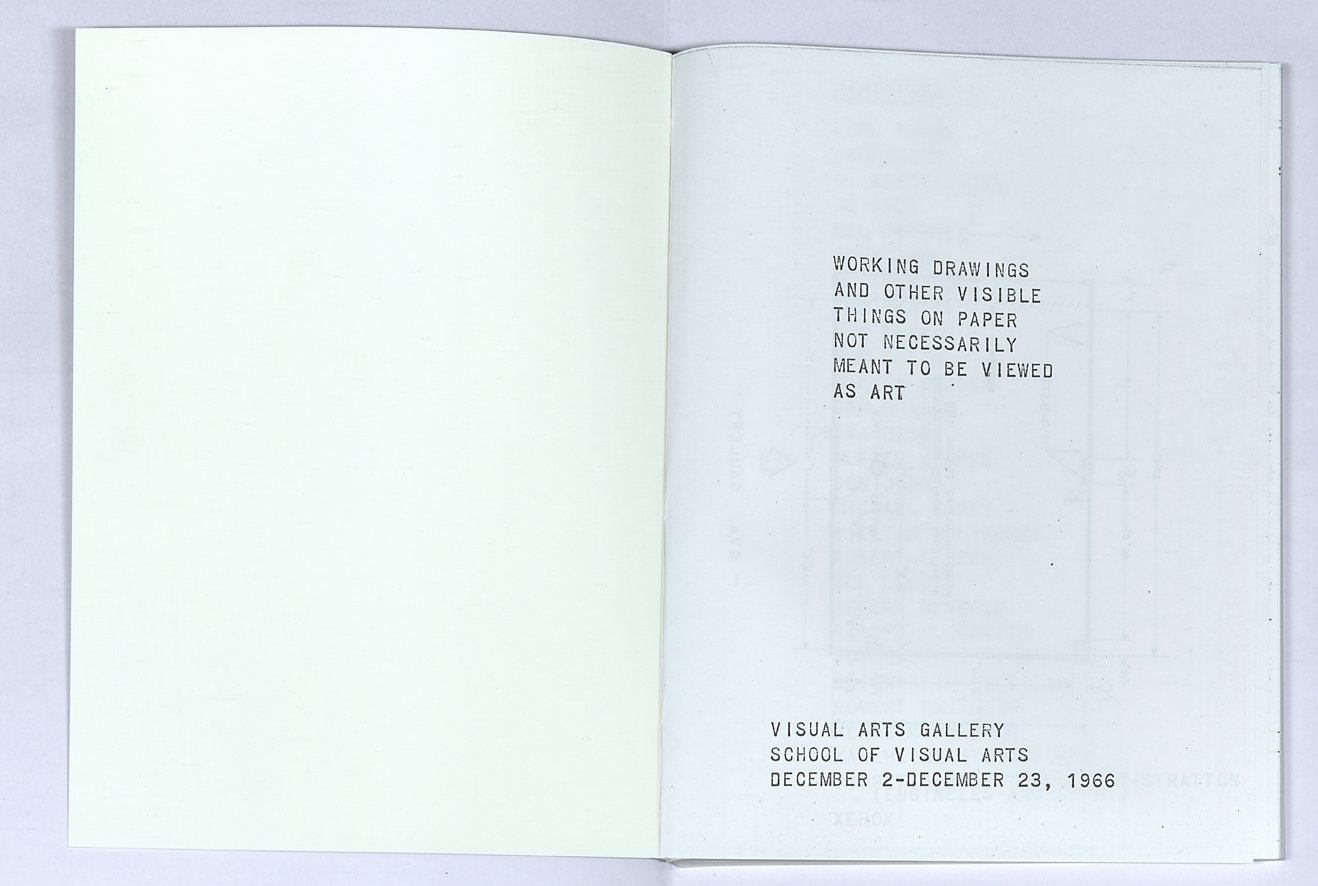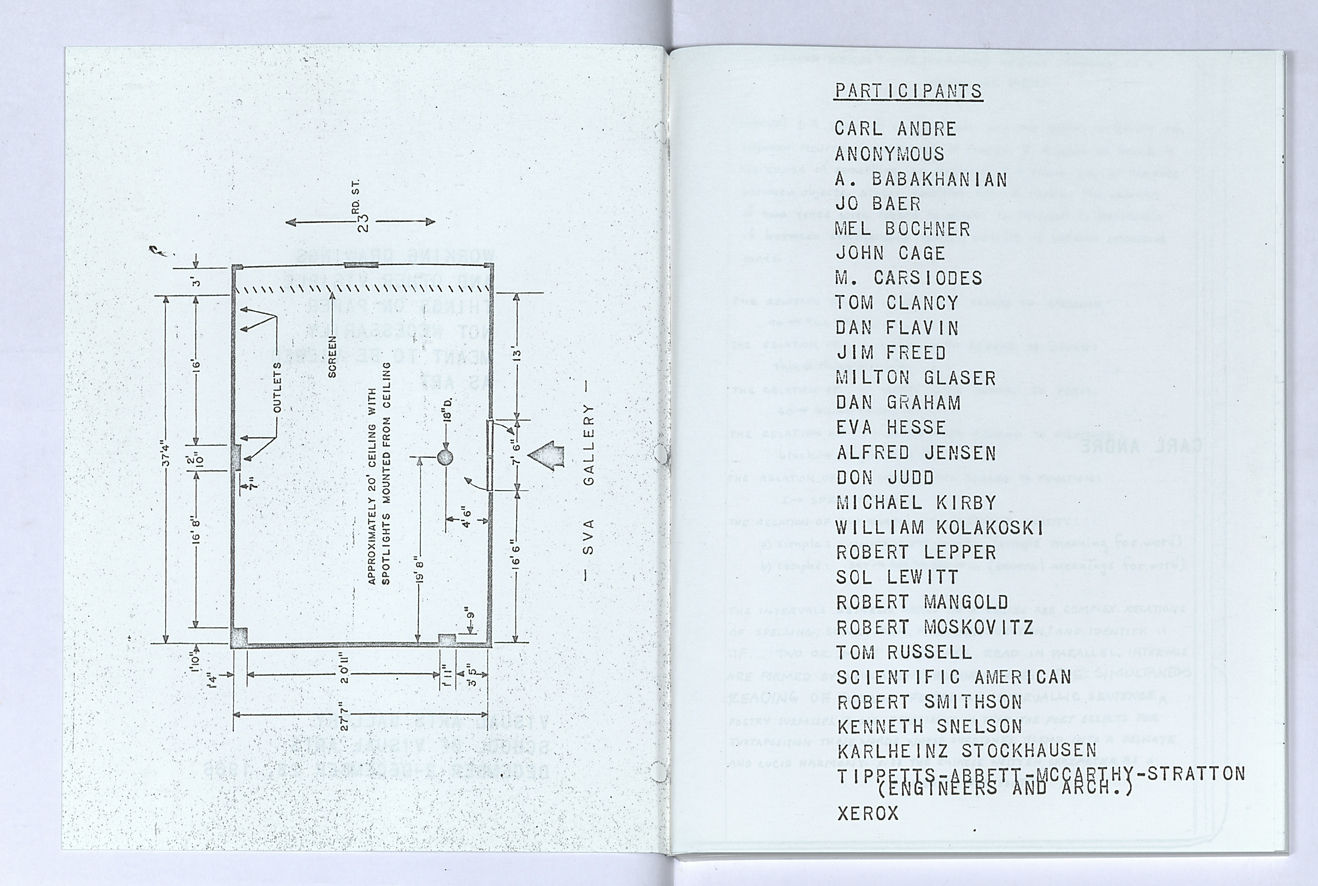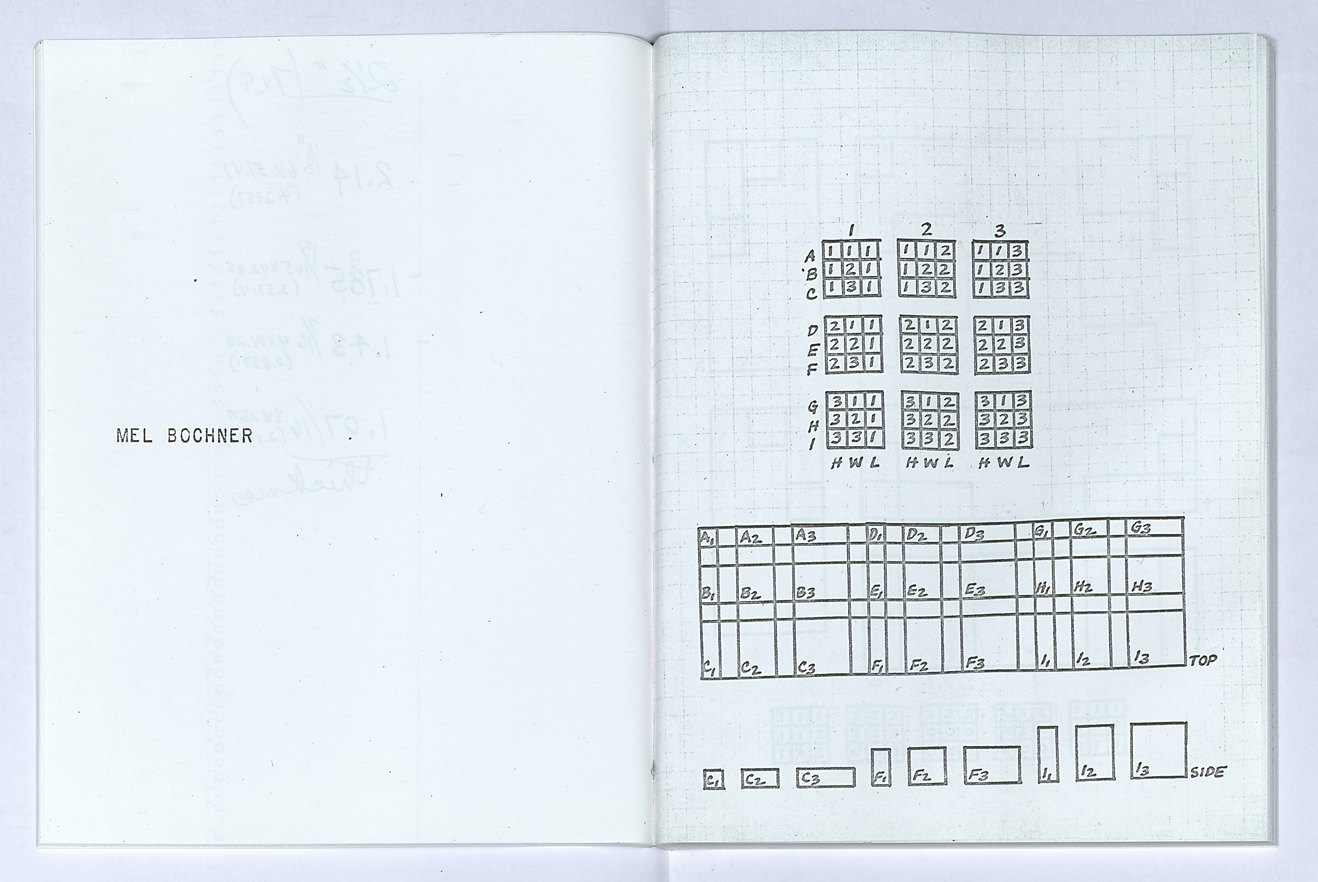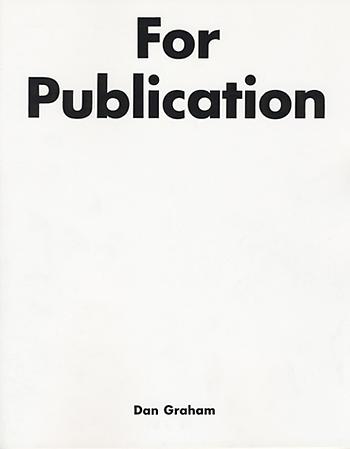Mel Bochner
Working Drawings and Other Visible Things on Paper Not Necessarily Meant to be Viewed as Art
Geneva / Köln / Paris [Switzerland / Germany / France]: Picaron Editions / Verlag der Buchhandlung Walther König / Cabinet des estampes du Musée d’art et d’historie, 1997.
offset
preto e branco
29 x 27.7 x 6.5 cm.
luva contendo 5 vol. : 4 vol. [182] p. cada ; 1 vol. 34 p.
tiragem 450 + 60 numerados e assinados
ISBN 3883752649
Originalmente concebido como uma exposição, realizada na Galeria de Artes Visuais, Escola de Artes Visuais, Nova York, em dezembro de 1966, Bochner compilou páginas de caderno e desenhos de trabalho de Carl Andre, Jo Baer, John Cage, Tom Clancy, Dan Flavin , Milton Glaser, Dan Graham, Eva Hesse, Alfred Jensen, Donald Judd, Michael Kirby, William Kolakoski, Robert Lepper, Sol LeWitt, Robert Mangold, Robert Moskovitz, Robert Smithson, Kenneth Snelson, e outros em um volume xerocado, que foi então apresentado em quatro cópias idênticas, cada uma em seu próprio pedestal.

Milton Glaser, cartaz de divulgação da exposição
Imagem: Digital scan da Coleção Livro de Artista/UFMG
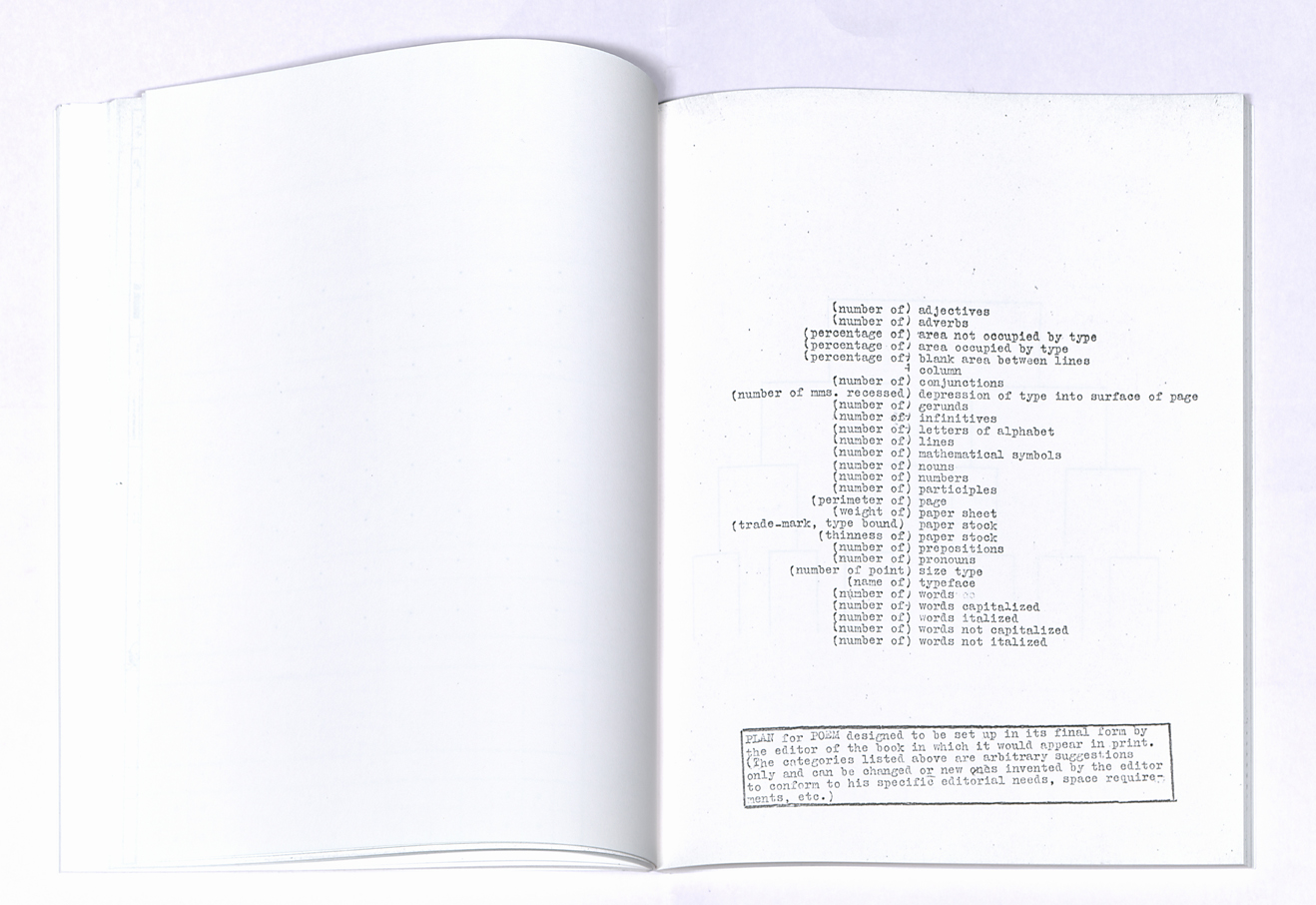
Dan Graham, Schema
Imagem: Digital scan da Coleção Livro de Artista/UFMG
Antes da abertura da exposição devolvi os desenhos originais aos artistas e expliquei o que estava fazendo. Ninguém fez qualquer objeção, se bem que Judd manifestou um certo ceticismo quando me referi à exposição como “minha obra”. Mas a meu ver esta designação era uma conseqüência inevitável das decisões que eu havia tomado no decorrer do processo. A uma certa altura, eu me dera conta de que o que estava em jogo em Working Drawings não era apenas um novo tipo de objeto (o livro) e um novo conceito de obra (a exposição), e sim uma definição de autoria radicalmente nova.
(Publicado no catálogo da exposição no Centro de Arte Hélio Oiticica, no Rio de Janeiro, 1997. Texto completo disponível em http://gramatologia.blogspot.com.br/2009/04/mel-bochner.html)
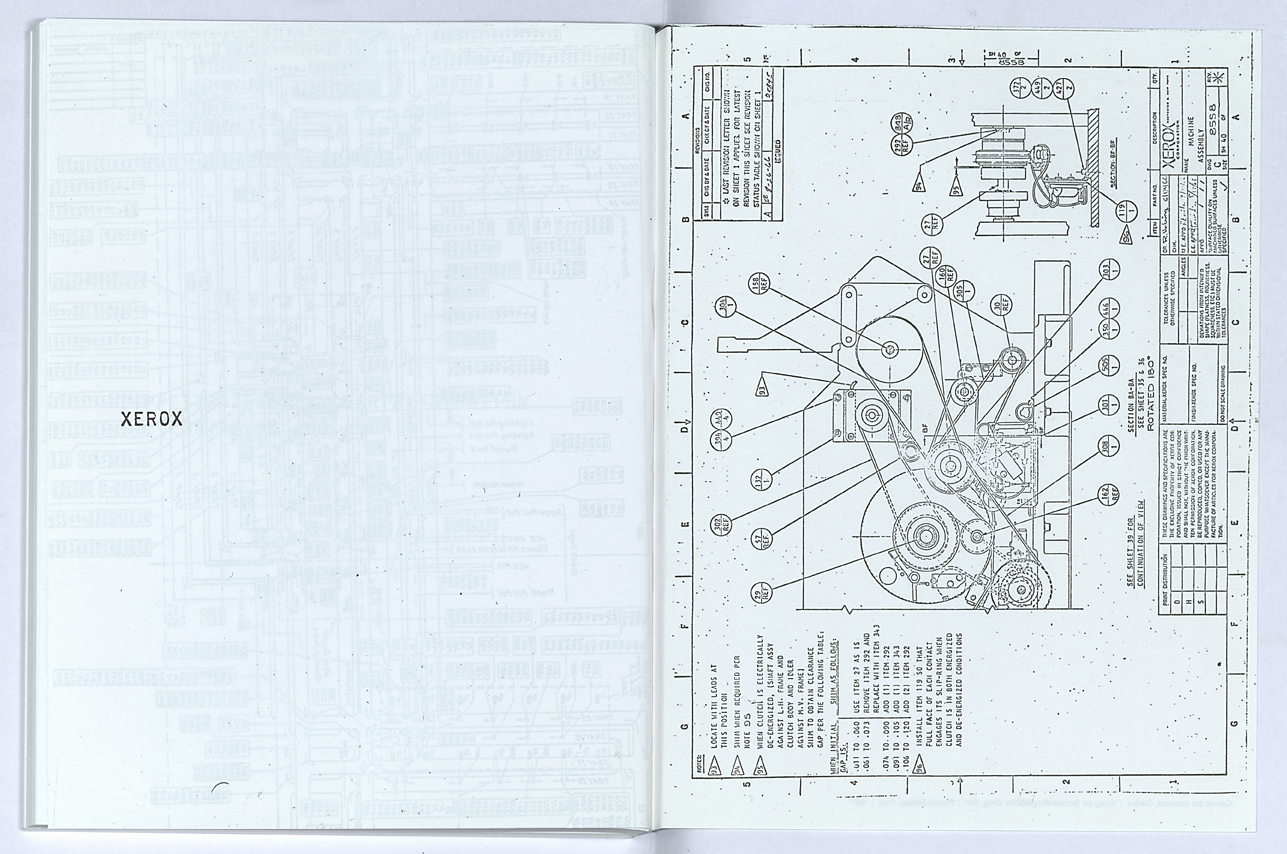
Diagrama da máquina de xerox utilizada para fazer cópia dos trabalhos.
Imagem: Digital scan da Coleção Livro de Artista/UFMG
Esta publicação, inspirada pela apresentação original realizada em 1966, consiste em quatro volumes idênticos, com um novo volume de textos críticos sobre a obra incluído na caixa. A brochura contém textos em francês e inglês de Christophe Cherix, Laurent Jenny e James Meyer.

